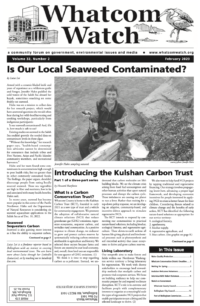by Joe Meche
Looking back to the snow and ice-related chaos over the Christmas holidays, it was difficult to imagine how far away spring was. The heavy snowfall was unexpected and caught most of us off guard, especially the freeze/thaw cycle and the ensuing ice dams on rooftops everywhere. The extracurricular activities fairly clouded the normal end-of-the-year celebrations. On the other hand, I’m sitting here on January 11 and the thermometer topped out at 57 degrees today, so it’s easier now to understand the first symptoms of spring fever. With the combination of the settling holiday dust and changing weather, it’s quite easy to shift out of winter mode and focus on what’s ahead.
Though it’s still a bit of a stretch until the first day of spring according to the calendar, experienced ‘hamsters look to other signs in February. The first crocuses are a visual source of excitement to many folks while the birdbrains amongst us (including yours truly) look up instead of down for the first swallows. Swallows are the true harbingers of spring, not matter how many times you’ve heard that robins are. We have robins here year round so I look to the swallows as the vanguard of things to come.
While we look forward to the first birds of spring, let’s not forget the winter visitors that are still here. As noted on the results from the Christmas Bird Count (CBC) in mid-December, numbers were low. Even though weather might have contributed on the day of the count, overall numbers are still down in many of the venues I’ve visited in the past month. High winter tides and strong winds have affected shorebird viewing in all the usual locations, like the tidal flats at Blaine and Semiahmoo. It will be interesting to see whether or not there will be long-term effects as the weather moderates.
The lower-than-usual numbers continued in my three territories on the Puget Sound Seabird Survey on the first weekend in January. So, where are the birds? From what I’ve seen in the past two months, they seem to be scattered from their traditional haunts to a great extent. What this means is that we, the bird-watching public, need to be aware of these changes in the usual patterns and make notes for future reference. My hope is that at least a modicum of normality returns to allay any fears of overall shifts in our population of wintering birds. Not meaning to be the messenger of gloom and doom, but just sharing my own observations.
On more positive notes, large flocks of Barrow’s goldeneyes are still on the move foraging in various parts of Bellingham Bay, most notably on the south bay near the Alaska ferry terminal. Snow geese that utilize Wiser Lake as their night roost forage during the day in the open fields south and southeast of Lynden. On a recent trip to the Lummi Flats, I observed large flocks of trumpeter swans in open fields south of the intersection of Slater and Ferndale roads. The number of swans on the CBC was more than 1,000 individuals, so we seem to be holding our own in that regard.
Of special note: a round of applause goes out to all who take the time to feed Anna’s hummingbirds during the winter. The CBC posted an unusually high number of 76 of these hardy hummers. With increased public awareness of the methods required to aid our wintering hummingbirds, the numbers have continued to rise. It seems that, not so long ago, most folks didn’t know they were even here in the colder months. Their rufous cousins migrate like clockwork, but the larger and more robust Anna’s stay with us year round.
All things considered, there are still birds in the out and about, so do what I do and just go out to see what you can see. When I led field trips in the not-so-distant past, I always told participants to keep their expectations low. That way you won’t be disappointed and whatever special birds you see are even more special. It’s a pretty simple approach, but it seems to work for me.
Facebook Page
On yet another note, I decided to expand the Beaks and Bills universe and dive into the realm of social media. I started a Facebook page to complement this column and it bears the same name. I opened it on the first of December, and, though it’s a private page, those who are interested simply have to send a request to join.
The idea of the page is to share photographs of birds that you’ve taken anywhere … there are no geographic limitations. I request that you post no more than six photos at a time and provide an ID caption for each photo. If you read the short list of rules, you’ll see that the page has no room for politics or personal baggage. If you have an interest at all and aren’t afraid of Facebook in general, consider joining the flock. I’ll see you there. .
________________________
Joe Meche is a past president of the North Cascades Audubon Society and was a member of the board of directors for 20 years. He has been watching birds for more than 60 years and photographing birds and landscapes for more than 40 years. He has written over 200 columns for Whatcom Watch.





























